New Footbridge for Britain's Historic Tintagel Castle
- Youtube Views 70,008 VIDEO VIEWS
A NEW pedestrian footbridge which recreates a lost crossing from the mainland to Tintagel Castle in Cornwall, UK, has officially completed.
The castle, traditionally associated with King Arthur, used to be connected to the mainland by a narrow strip of land which has steadily eroded over the centuries.
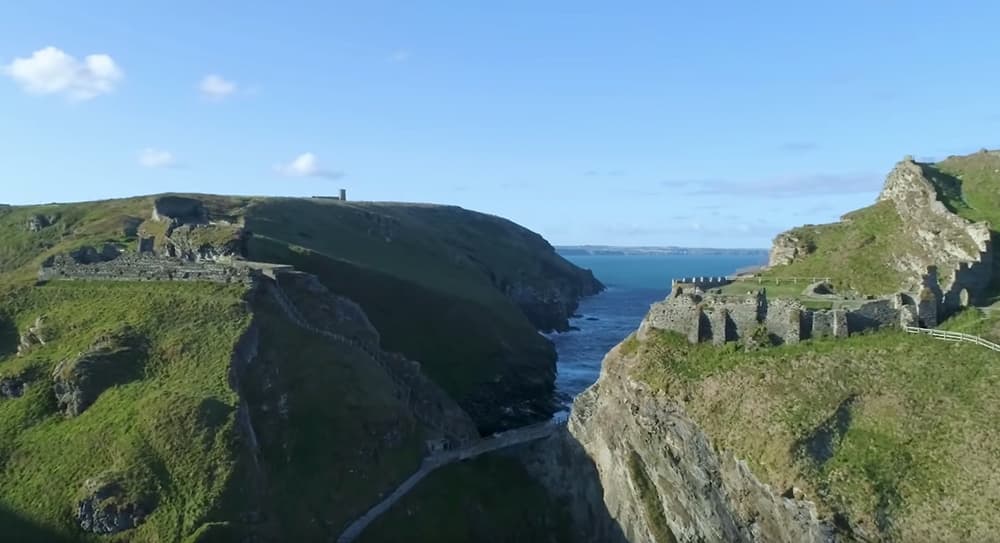
Above: The connection between the peninsula and the mainland is being steadily eroded (image courtesy of English Heritage).
Until now, visitors would need to descent down into a small ravine using a steep and narrow path and cross a short footbridge before walking up on the other side.
This path could become overcrowded at peak times though, with more than 3,000 tourists a day visiting the site. The result was a 45 minute wait at either side of the crossing.
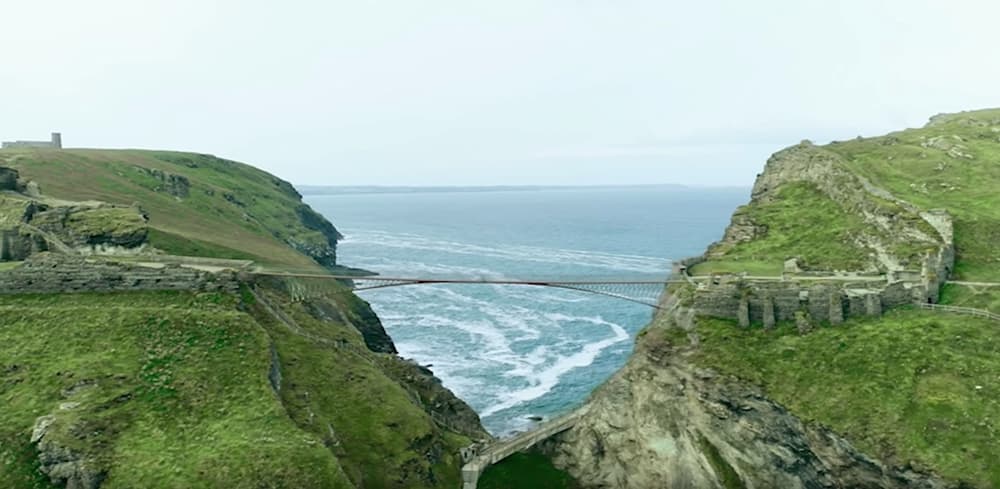
Above: A slender footbridge now provides access to the historic site (image courtesy of English Heritage).
The new, 70-metre long, 2.5-metre wide bridge now provides level access to the historic site. It cost £5 million to build.
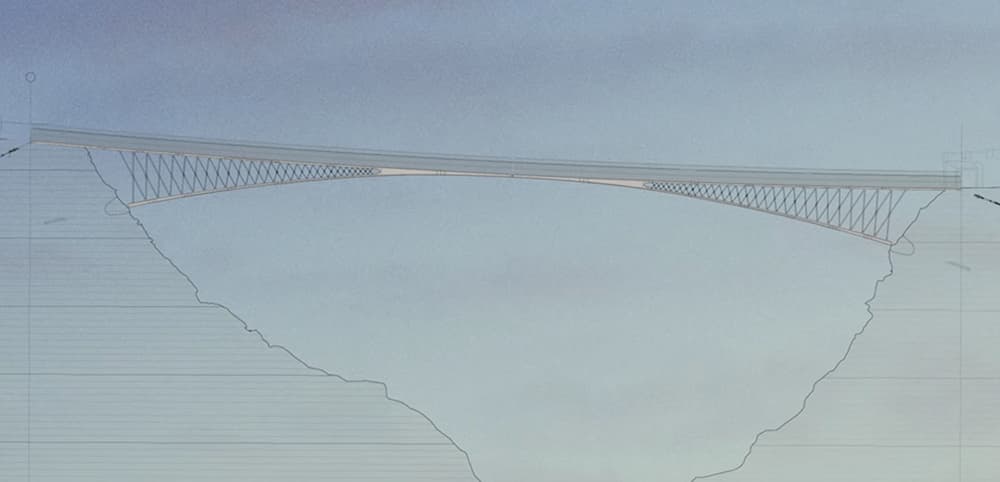
Above: The bridge consists of two cantilevered walkways that are separated by a small gap in the middle (image courtesy of English Heritage).
Suspended 60 metres above sea level, the crossing is composed of two cantilevered parts that almost connect in the middle, leaving a 4-centimetre gap between the two halves.
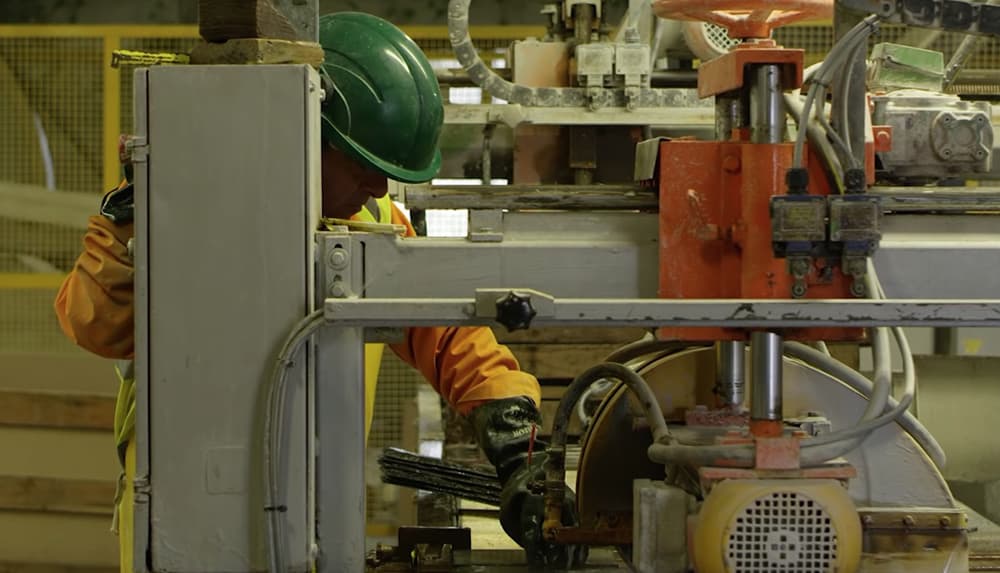
Above: Locally-sourced slate has been used to pave the bridge (image courtesy of English Heritage).
Designed to be as visually unobtrusive as possible, the bridge is constructed out of steel and features a slate path.
The slate tiles have been sourced and manufactured locally, with the steel bridge itself being manufactured in Plymouth, just outside of Cornwall.
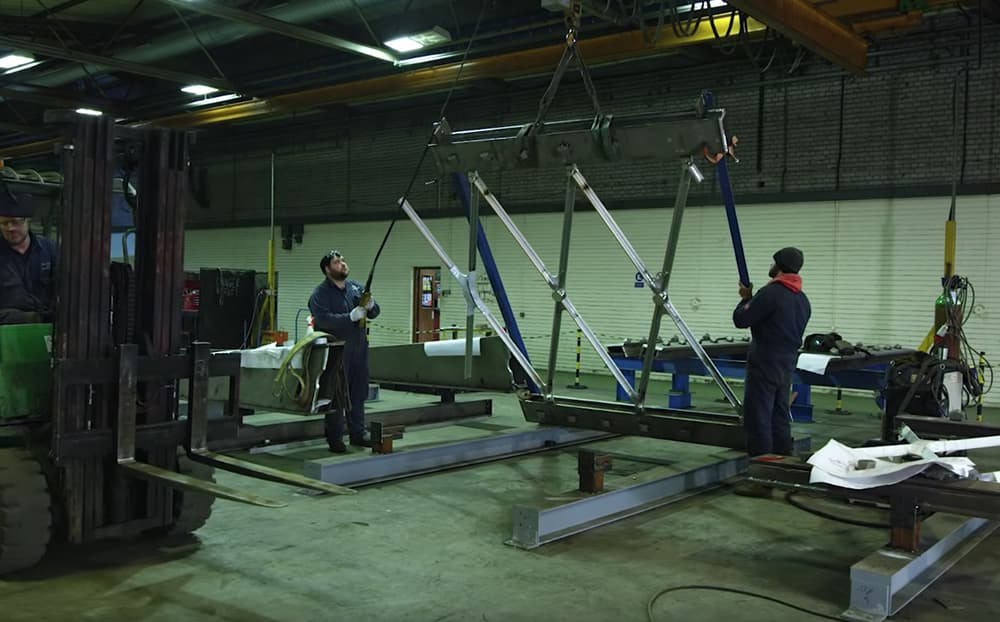
Above: The bridge being manufactured (image courtesy of English Heritage).
The bridge's structure consists of 18 sections, which were assembled in a factory before being disassembled and brought onto the site using helicopters.
Comments
Next up








